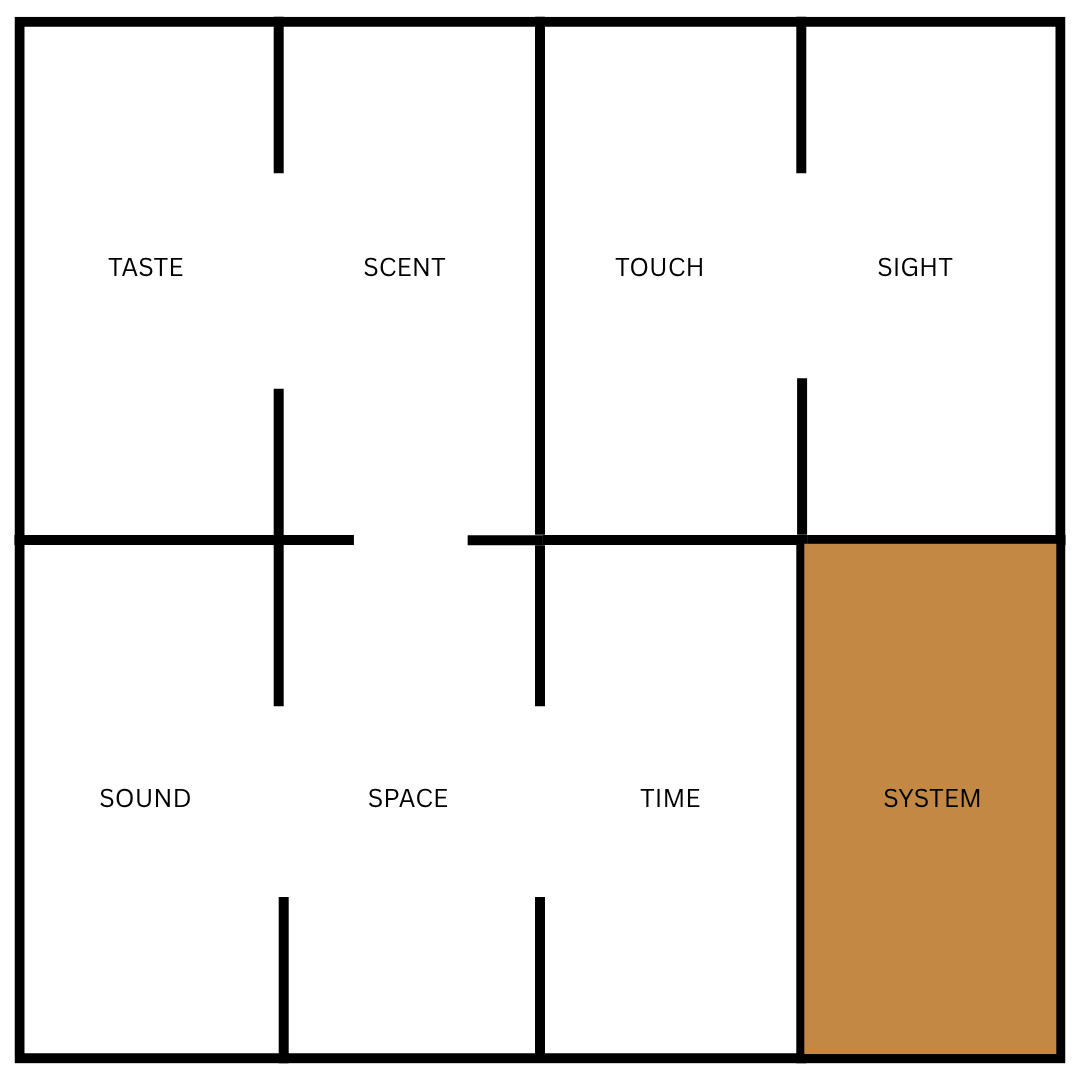Ode Logo Explained
This grid represents the eight perceptual systems, but look closer — it's the spaces between them that matter.
Those black lines aren't just dividers. They are channels, mapping how information flows between different ways of sensing. An open divider indicates a direct and seamless channel, where those senses communicate naturally. A closed divider represents a barrier, showing where it’s harder for information to pass between them.
For example, taste and scent might share an open divider; they're so intertwined that one barely exists without the other. But taste and sound? They're closed off, operating in different dimensions of perception entirely.
System, however, has its own space. It's not just another sense but the meta-sense: the one that recognizes patterns across all the others. It sees the feedback loops, the hidden architecture, the way everything connects. Both part of the grid and operating above it.
Here's what's important: this mapping is subjective. My boundaries aren't your boundaries. At any point in time these boundaries can be rearranged from new perspectives.
That's why there are no labels, no text declaring which sense lives where in the actual logo. The flow of information between taste and touch might feel different to you than it does to me. Maybe your sound and space are deeply connected, or your sense of time bleeds into everything else. The grid invites you to locate yourself within it, to trace your own channels of perception.
Think of it as a framework. A starting point for noticing how you process the world — which senses naturally speak to each other in your experience, and which ones require conscious translation.
The architecture of perception isn't fixed. It's personal and dynamic.
How would you draw your own lines?

